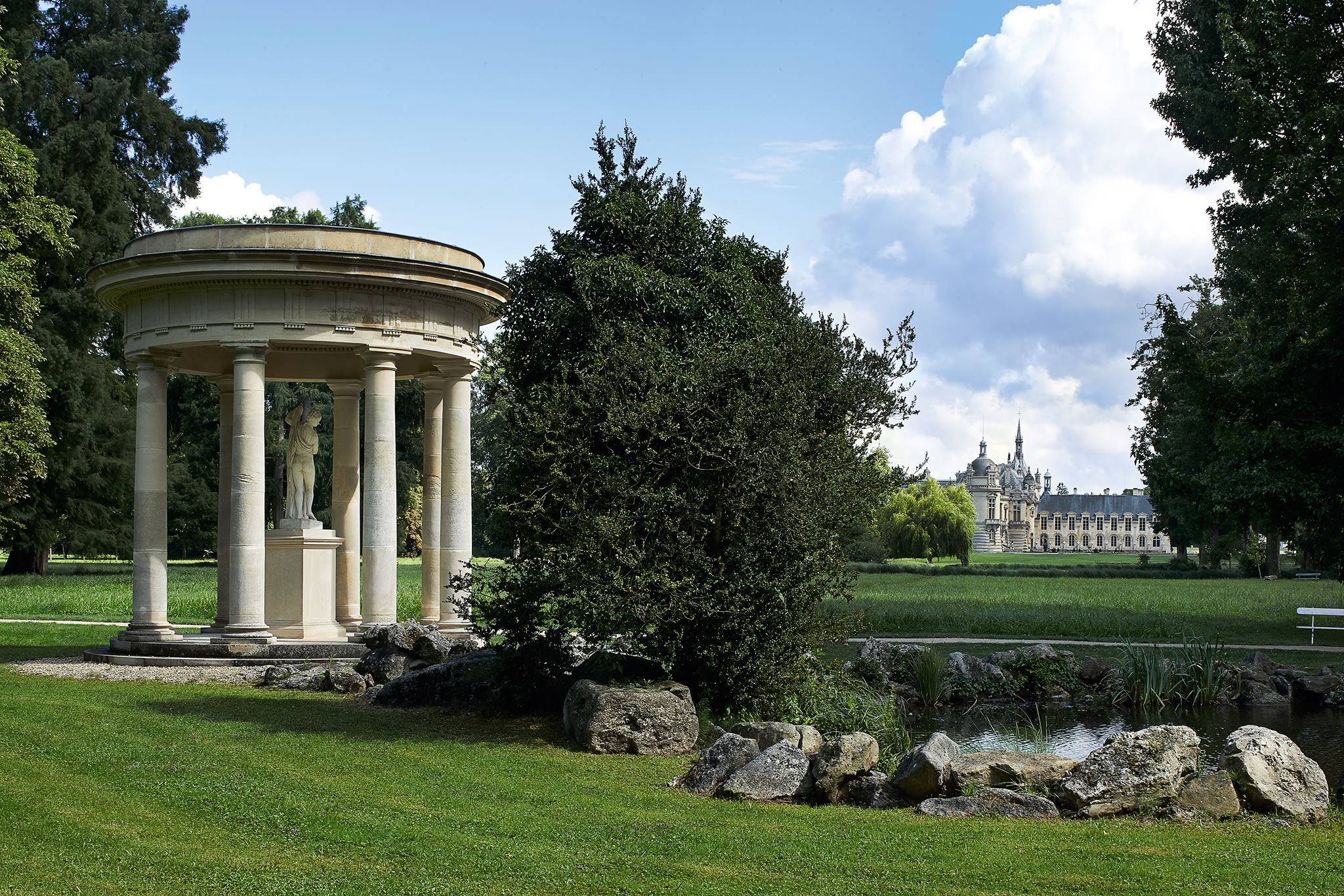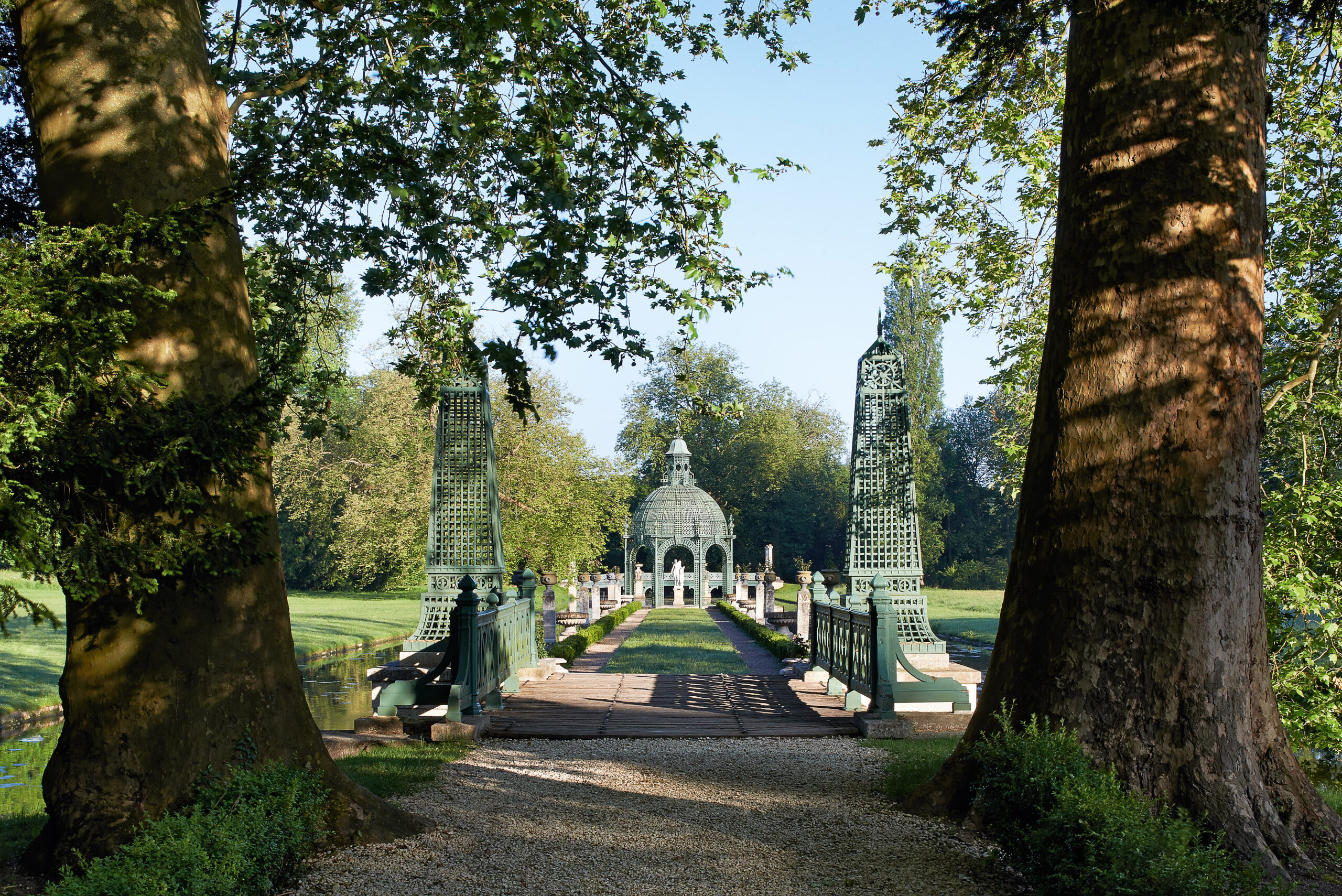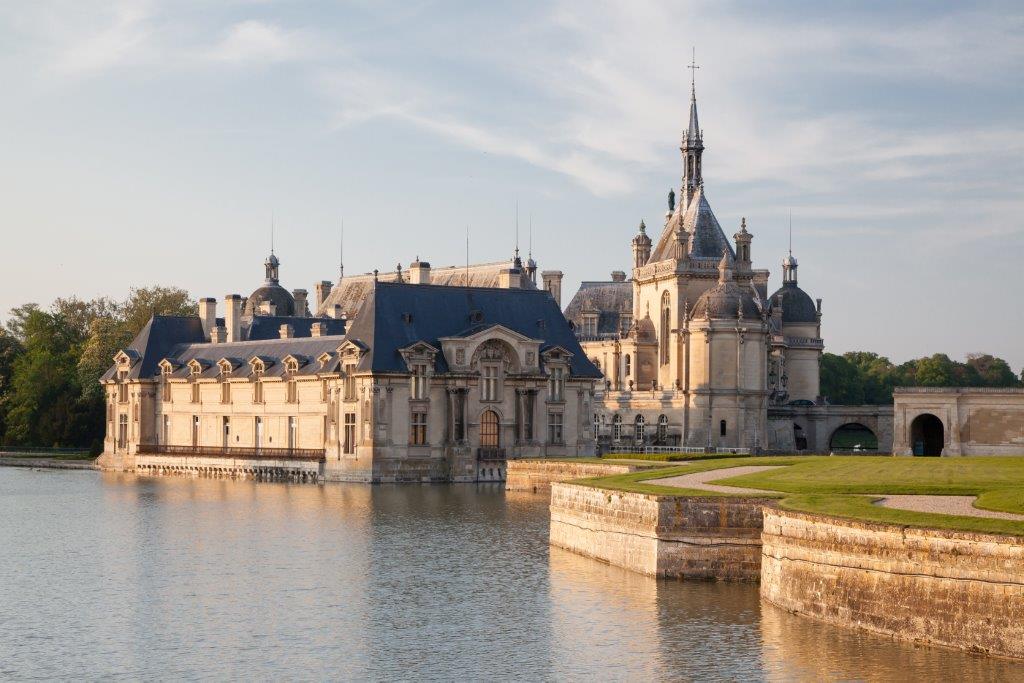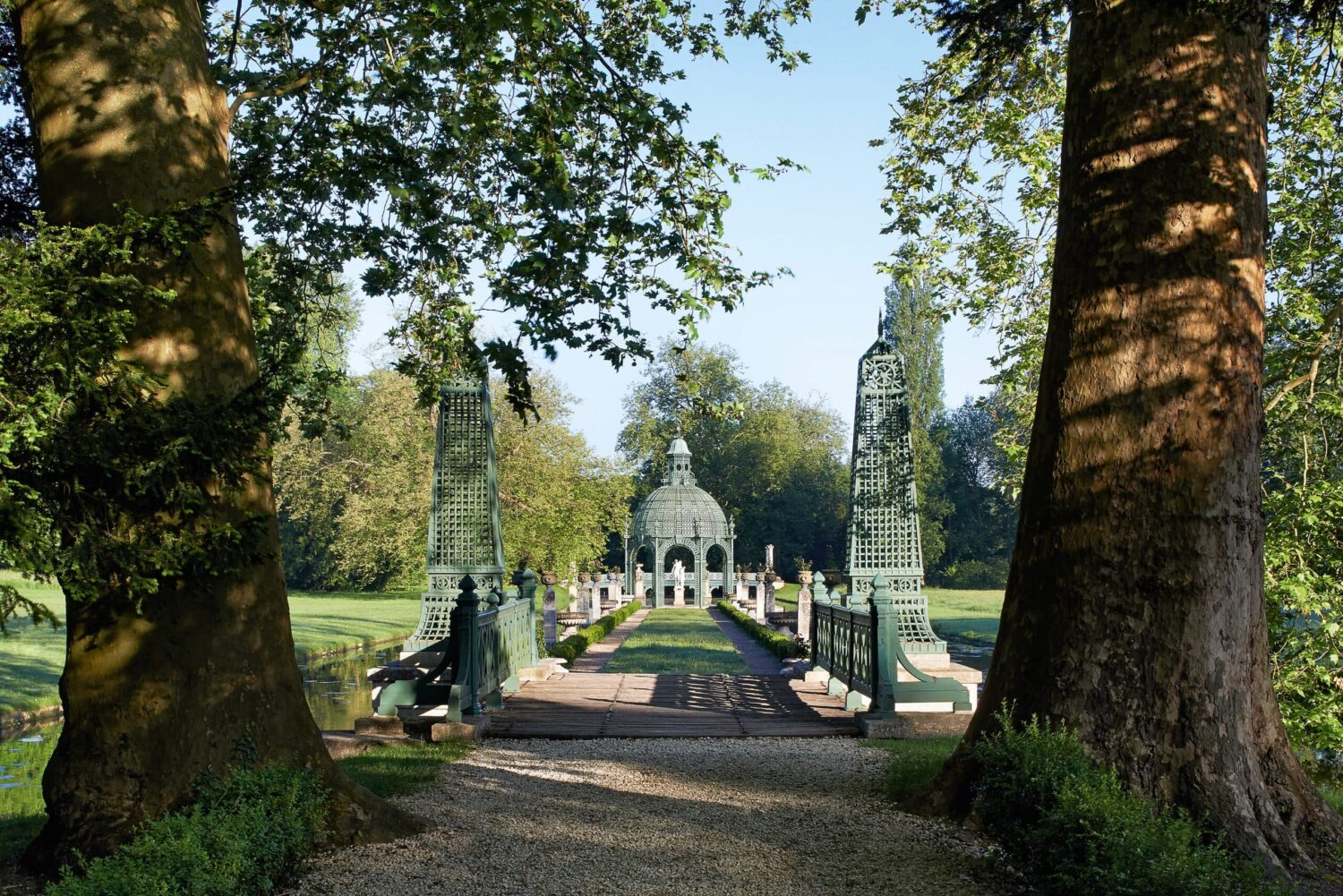Ideal for a romantic stroll
Located between the Château and the Great Stables, the design of the English garden by the architect Victor Dubois began during the Restoration in 1817 for Prince Louis-Joseph de Bourbon Condé (1736-1818), and then for his son, Louis-Henri-Joseph (1756 – 1830). It occupies a plot of a part of André Le Nôtre’s gardens that were destroyed during the Revolution. Enhanced with romantic structures such as the temple of Venus, which is inhabited by swans and waterfowl that nest on its many islands, this garden also contains a large water feature designed by André Le Nôtre: the Beauvais Waterfall.

The Temple of Venus
The Temple of Venus is a mansion built at the beginning of the 19th century by the architect Victor Dubois. Erected on the banks of a romantic stretch of water, it is inspired by the Greco-Roman temples and houses a copy of the famous antique statue of Venus, the goddess of Love and Beauty.
The Island of love
The Island of love is located on a site that was formerly a venue for garden fêtes, where the princes of Condé received their guests in the summer season. Created by the Duke of Aumale in the 19th century, this small island, bordered by fountains and hedges, features a structure housing a statue of Eros, the God of Love, from whom it takes its name.


The characteristics of the English garden
Contrary to the French-style garden, with its geometric layout and grandiloquent perspectives, the English garden draws its inspiration from the romanticism. This type of garden is both a landscape and a work of art.
English gardens are made up of landscapes reminiscent of Antiquity, whence the references to Venus and Eros that can be found in Chantilly.






















